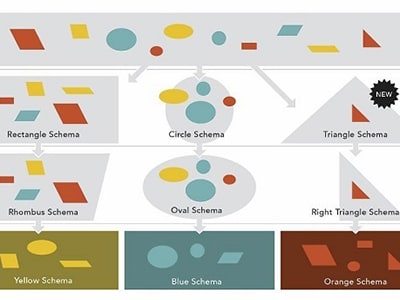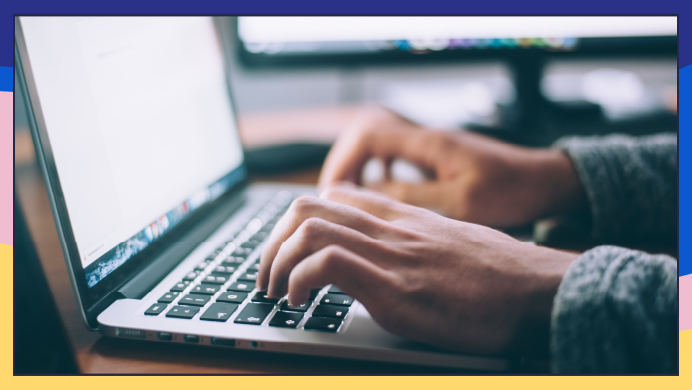The human brain has fascinated me since I was a child. Understanding how one thinks, remembers, and acts is extremely complex. As a learning professional, I rely on brain science to ensure the efficiency of the programs I design. This blog series addresses some of the more basic concepts of memory and learning, and their application in real life learning design. Let’s start from the beginning…
Memory is the superior (logical or intellectual) cognitive process that defines the temporal dimension of our mental organization. It is our ability to encode, store, retain, and then recall information and past experiences.
Memory has a fundamental role in life, reflecting the past as the past, and offering the possibility of reusing all past and present experiences, as well as helping to ensure continuity between what was and what was going to be.
Memory is an active, subjective, intelligent reflection process of our previous experiences.
Memory is related to learning but should not be confused with learning. There are three main processes involved in human memory: Encoding, Storing and Retrieving.

Encoding
Encoding is the first process that the human memory puts in operation. The efficiency of learning, in general, depends on the efficiency of the encoding process. It is an active and selective process that depends on a number of factors. There are three types of factors that can influence encoding efficiency:
- Content factors – related to the type of material to be encoded
- Environmental factors – related to the conditions under which the encoding takes place
- Subjective factors – related to variables in effect when encoding takes place
The content factors are:
- The volume of the material (the greater the volume, the more difficult the encoding).
- The degree of organization of the material (the better organized, the easier the encoding).
- The degree of familiarity.
- The place occupied by the information in the structure of the content; that is, at the beginning, middle, or end of the material (information placed at the beginning and at the end tends to be stored more easily than that placed in the middle).
- The nature of the material.
Environmental Factors
Environmental factors, although not always considered important, are significant to the memorization process. Temperature, humidity, noise, affection, socio-emotional climate, etc., are just a few environmental factors. Depending on these particularities, the encoding process may be stimulated or inhibited.
Subjective Factors
Subjective factors can include elements such as the learner’s state of rest or fatigue, health or illness. Motivation, interests, and disposition are critical to the encoding process, which is why, as instructional designers, we spend a lot of time defining “What’s in it for me?” for all training programs.
Storing
Storing is the second process that makes it possible to preserve encoded information. Just as with encoding, storing is an active and selective process. As long as information is stored, it is permanently transformed, reorganized, and included in new links even if the subject is not fully aware of the process. Storing the information involves both quantitative (the duration of retention) and qualitative (the fidelity of retention) aspects.
Depending on the duration of retention, there are two levels of memory:
- Short-term memory (STM)
- Long-term memory (LTM)
Both of these act as filters that protect our brain from the unbelievable amount of information we encounter on a daily basis. The more the information is repeated or used, the more likely it is to be retained in long-term memory (which is why, for example, reinforcement of the concepts learned is important when designing a learning program). This is the process of consolidation, the stabilizing of a memory trace after its initial acquisition.
Retrieval
Retrieval is the process of accessing the stored information. This occurs through recognition or recall. Recognition is the association of an event or object which one previously experienced or encountered and involves a process of comparison of information with memory, e.g., recognizing a known face, true/false or multiple choice questions. Recall involves remembering a fact, event, or object, and requires the direct uncovering of information from memory, e.g., remembering the name of a recognized person, fill-in the blank questions. Recognition is simpler because it requires only one process – a simple familiarity decision. Full recall requires a two-step process – first the search and retrieval of several items from memory, and second, choosing the correct information from the multiple items retrieved.
The theory of encoding specificity developed by Endel Tulving adds another component to the recall process. This theory explains that recall uses information both from the memory trace and from the environment in which is retrieved. Basically, recall is better when the environments of encoding and retrieval are similar.
Memory and forgetting go hand-in-hand. There is quite a bit of literature concerning the forgetting curve, but to simplify here, it’s helpful to keep in mind that forgetting has different causes and different rhythms at different ages, and that the most effective way to combat forgetting is repetition. To be truly efficient, repetition should be considered in light of the following criteria:
- Achieve an optimal amount of repetition. Though it’s not intuitive, forgetting is associated with both under repeating and over repeating.
- Space the repetition. The number and duration of pauses depends on the volume and complexity of the material.
- Use appropriate repetition “formulas”. Logic is preferable to mechanical repetition, as is active repetition as opposed to passive.
Summary
Memory is essential to learning, but it also depends on learning because the information stored in one’s memory creates the basis for linking new knowledge by association. It is a symbiotic relationship which continues to evolve throughout our lives. The next blog in this series will take a look at how to apply these concepts to learning design. Because we’re all really trying to devise strategies to be more like elephants…







